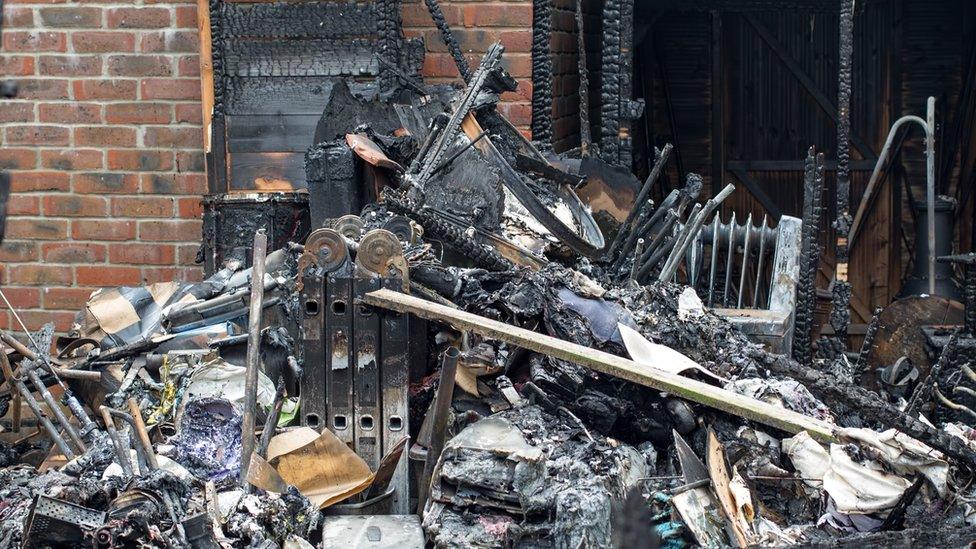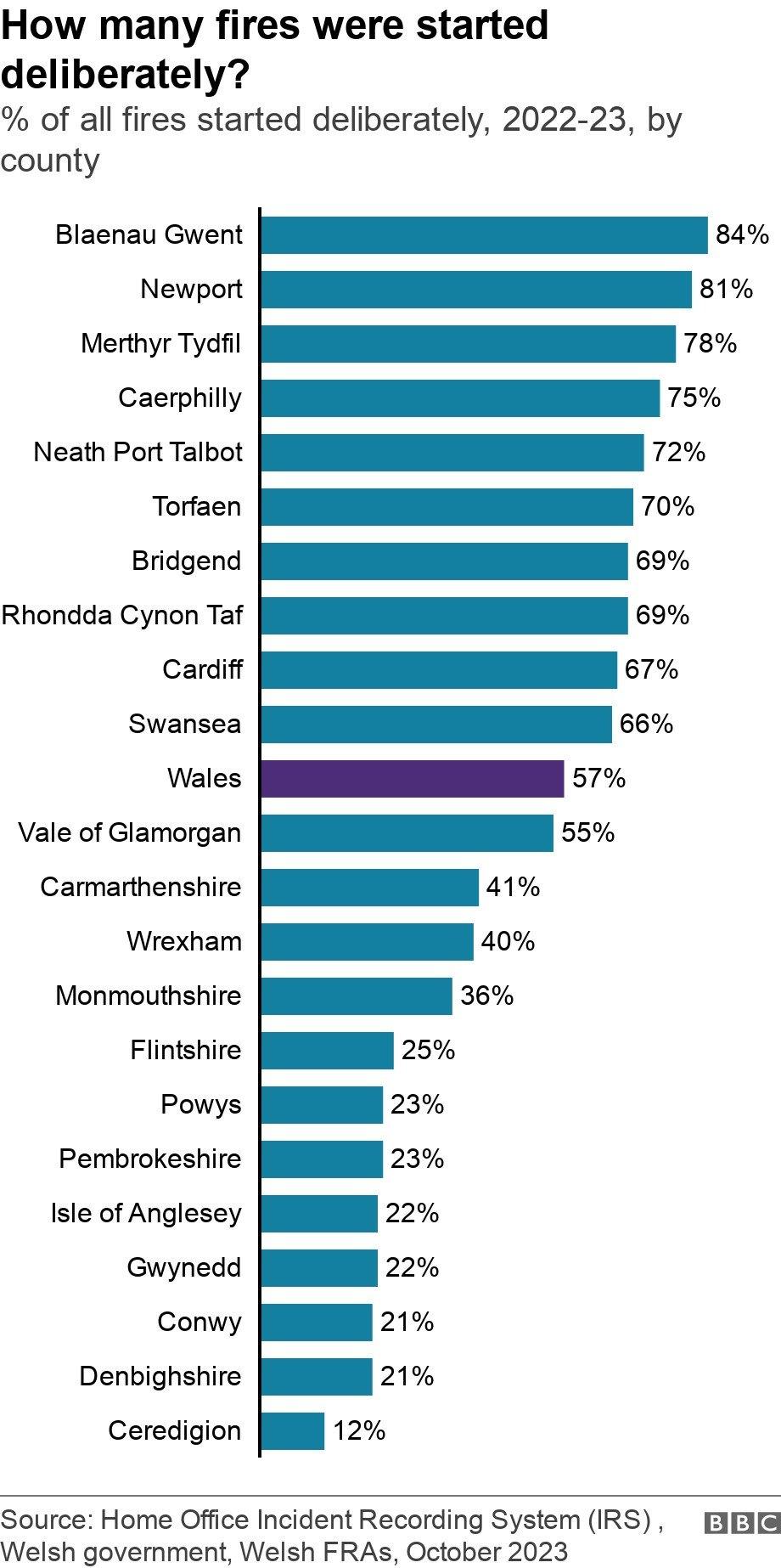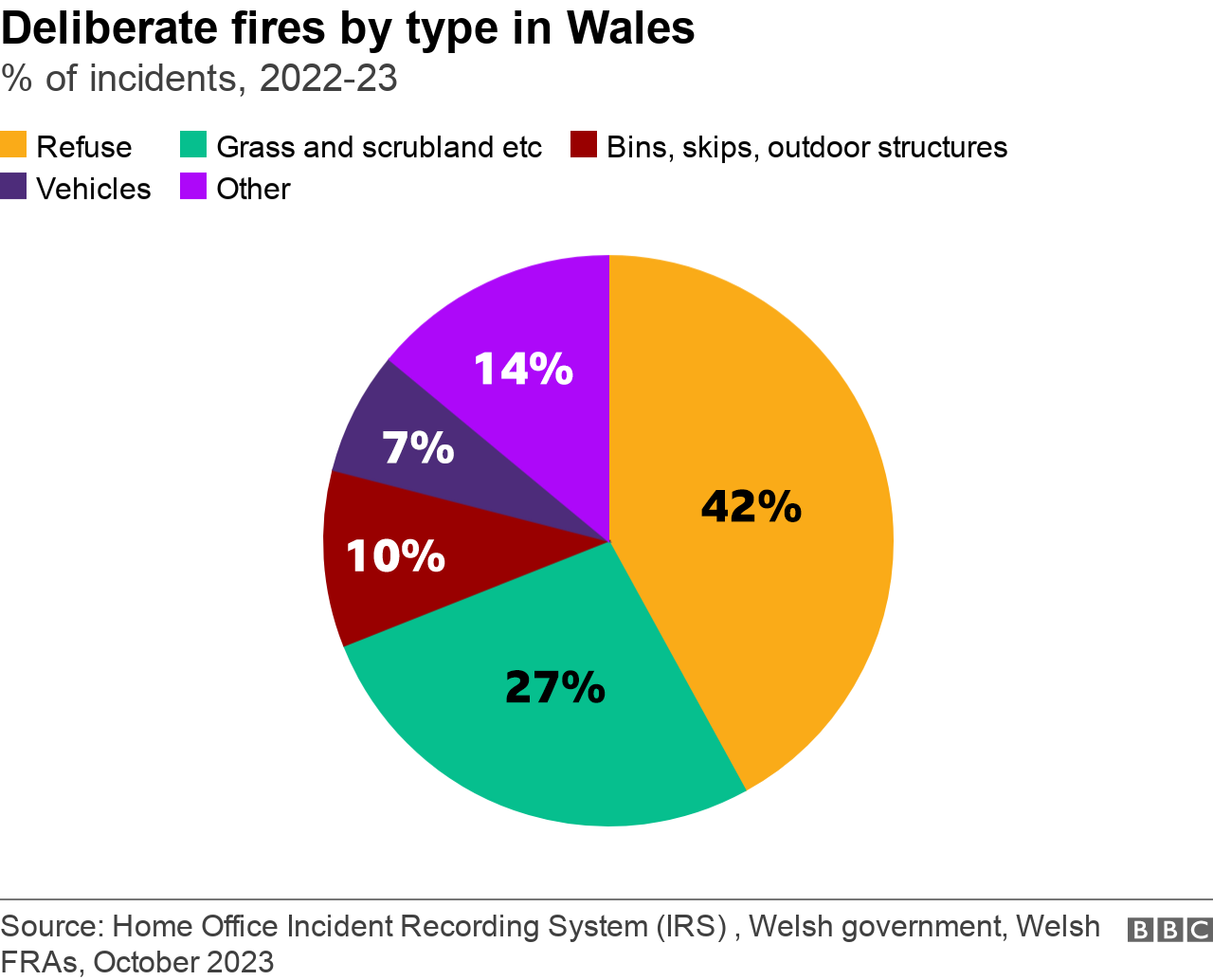Deliberate fires: South Wales valley areas lead hot spots
- Published

There were just over 11,000 fires of all types across Wales in the year ending in March
More than three-quarters of fires in parts of south Wales in the last year were begun deliberately, figures show.
The hot spots saw 84% of fires in Blaenau Gwent started deliberately, 81% in Newport and more than 75% in Merthyr Tydfil and Caerphilly.
Overall 42% of deliberate fires involved refuse, 27% grass or scrubland and 8% were in buildings, according to latest Home Office statistics.
Fire chiefs say they can divert resources and also endanger people.

Across Wales, more than half (57%) of fires were started deliberately but this dropped to as low as 12% in Ceredigion and under a quarter in north Wales council areas Anglesey, Conwy, Denbighshire and Gwynedd were started deliberately.
Blaenau Gwent, although a small county, reported 430 deliberate fires, more than Bridgend or Neath Port Talbot.
Although showing a small increase in the last year, the number of deliberate fires in Wales is still down 41% on 2011-12.
Separate community-level figures published this week in a freedom of information request response, revealed Tredegar Park and Stow Hill in Newport were hotspots for rubbish and waste fires in recent years, while Ringland in the city had the most call-outs for wheelie bin fires.
Bonymaen and Llansamlet in Swansea came top amongst all communities for the number of fire calls of all types over a period from 2012 to 2021.

What else do the figures show?
In 2022-23, there were just over 11,000 fires of all types across the country, a small rise on the previous year but 69% lower than 2001-02
There were 14 fatalities from fires, the lowest number since current records began and down seven on the previous year
The number of house fires is around half the figure seen in 2001-02
Response times showed the fire service arrived at two-thirds of house fires within 10 minutes
The number of grassland and woodland fires fell slightly. More than half of deliberate fires in Powys were grass or scrubland
Malicious false alarm calls are on a downward trend
Of 4,766 special service incidents responded to, other than fires, 30% involved road crashes
South Wales Fire and Rescue's head of operations Dean Loader said: "Deliberate fires damage our landscape, they endanger the public, wildlife and property, and they can divert resources away from accidental house fires, road traffic collisions and water rescues, which may be no fault of those involved."
The service is involved in several initiatives to reduce deliberate fires and their impact.
These include school education, the Healthy Hillside project , externaland saying No to Deliberate Fires, while a new programme Street Firefighter, external, recently trialled in Llanrumney and Ely in Cardiff, is aimed at young people in more deprived communities to educate them on the consequences of deliberate fires.
Mr Loader said deliberate refuse fires were identified as an issue several years ago and the service ran a Don't Fuel the Fire campaign., external
"The public can play their part by only using licensed waste and recycling collection and disposal facilities, and in identifying those responsible for deliberate fires, by contacting Crimestoppers," he said.
"We thank the public for calling in deliberate fires at the earliest possible opportunity, so that our crews can tackle and contain them."
The annual figures are compiled by the Welsh government , externalfrom Home Office figures, sourced from Wales' three fire and rescue services.